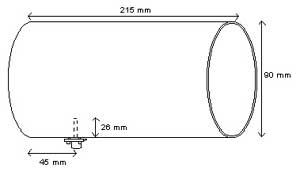You’ve had everything planned-meeting, phone call, reports. Yet, at the end of the day, your in-try still spills over and your to-do list is a mile long. Help !.
Article by Jackqueline Tan – herworld magazine October 2000
Effective planning
Set priorities and goals. “ avoid hopping from one task to another. Plan to have a plan, “ says Sandra Tan, assistant human resource manager at an arts institution. “be realistic. You can only do so much in day.”.
Cut down distractions
You’ve just chatted away the morning with your colleagues. “people can be a great distraction. Learn to excuse yourself firmly but politely, or avoid eye contact,” Sandra advises. Don’t be a slave to e-mail. “I simply delete all junk mail without opening them!” says Sandra. Stick with specific times to retrieve and respond to messages.
Delegate
Unless you’re wonder women/ Superman, you can’t handle everything. Says Sandra, “Give your colleagues a sense of ownership, but be clear about responsibilities – that way no time is wasted wondering who does what”.
Get a good filling system
Purge files every few month to avoid a pile-up. Keep different tiers or departments to help you fish things out fast.
Manage your meetings
Always have an agenda. Don’t side-track from core issues. “Come well-prepared. If possible, don’t let the time run over. Arrange to meet another day instead.”.
Labels: just for knowlege
A coprocessor is special processing unit that assists the CPU in performing certain operations.A math coprocessor is a chip or part of a chip that specializes in doing math, extending the capabilities of a CPU in a transparent manner. It is a piece of hardware that attaches to the otherboard or is part of the CPU. Most of the time a math coprocessor performs mathematical computations, particularly floating-point operations. Math coprocessors are also called numeric coprocessors or floating point units (FPU).
The use of floating-point numbers enables a binary representation of not only integers, but also fractional values over a wide range. A common application of floating-point numbers is in scientific applications, where very small and very large numbers must be accurately expressed. But floating-point numbers are also useful for business applications such as computing interest, and in the geometric calculations inherent in CAD/CAM processing.
In addition to being able to quickly execute, load, or store operations on floating-point numbers, coprocessors can directly perform all the basic arithmetic operations on them. besides being able to add, subtract, multiply and divide floating-point numbers, they can also operate on them to perform comparisons, square roots, logarithms, sine, cosine, tangent, absolute value, and remainders.
Labels: just for knowlege, komputer
By DBS on herworld magazine October 2000
Your risk appetite
What do you need to know about investing ? the relationship between risk and returns.
Risk, in investment terms, means volatility. There is a chance that you may not get the outcome you want. And yes, the cliché “the higher the returns, the higher the risk” is true.
While we invest to get better returns on hard-earned savings, our appetite for risk or fluctuations will determine how our money should be invested. What’s the use of higher returns if we cannot survive the anxiety ?.
Fortunately, there are investment products designed to suit you, no matter what your risk appetite. Whether you prefer safe and secure, or potential higher returns with some associated risk – the choice is yours.
Two approaches to investing.
1. direct includes fixed deposits, shares, bond etc.
2. managed include unit trust, insurance polices, investment—linked plans, etc.
with each of these approaches you can find low, medium and higher risk investments. It is important that you select investments that match your risk profile.
A combination of different investment product can span the full range of risk profiles to optimese potential giants. Before you start, consider your choice carefully.
| Tip Before you start investing, speak with an investment planner who can help you understand your risk profile and match to the right product. |
For detail information you can visit at www.dbssecurities.com
Labels: just for knowlege

One of the famous homebrew 2.4GHz antennas is the tin can antenna. It is very easy to build and high success rate. In this particular example, the antenna is build by M. Ihsan ihsan@sofrecom.co.id
Typical dimension of the tin can antenna is shown in the figure. Typical dimension of the can is about 9 cm diameter and 21 cm length. A small omnidirectional antenna about 2.6 cm length sticks into the can about 4.5 cm from the bottom of the can.

The radiator in a tin can antenna is a 2.6 cm length omnidirectional radiator. It can be build by soldering a 2.6 cm metal stick into an N-type male connector. Some people put screw sticking on the stick to tune the length of omnidirectional radiator to get the maxim match of the antenna.

In some cases, we need to calculate the possibility to use a certain diameter tincan for 2.4GHz antenna. The calculation is provided at http://www.turnpoint.net/wireless/cantennahowto.html. Shown in the figure is the calculated result for a 3.25 inches diameter. Make sure the tincan can be operated in frequency 2.4-2.47 GHz.
Labels: jaringan, just for knowlege, komputer

